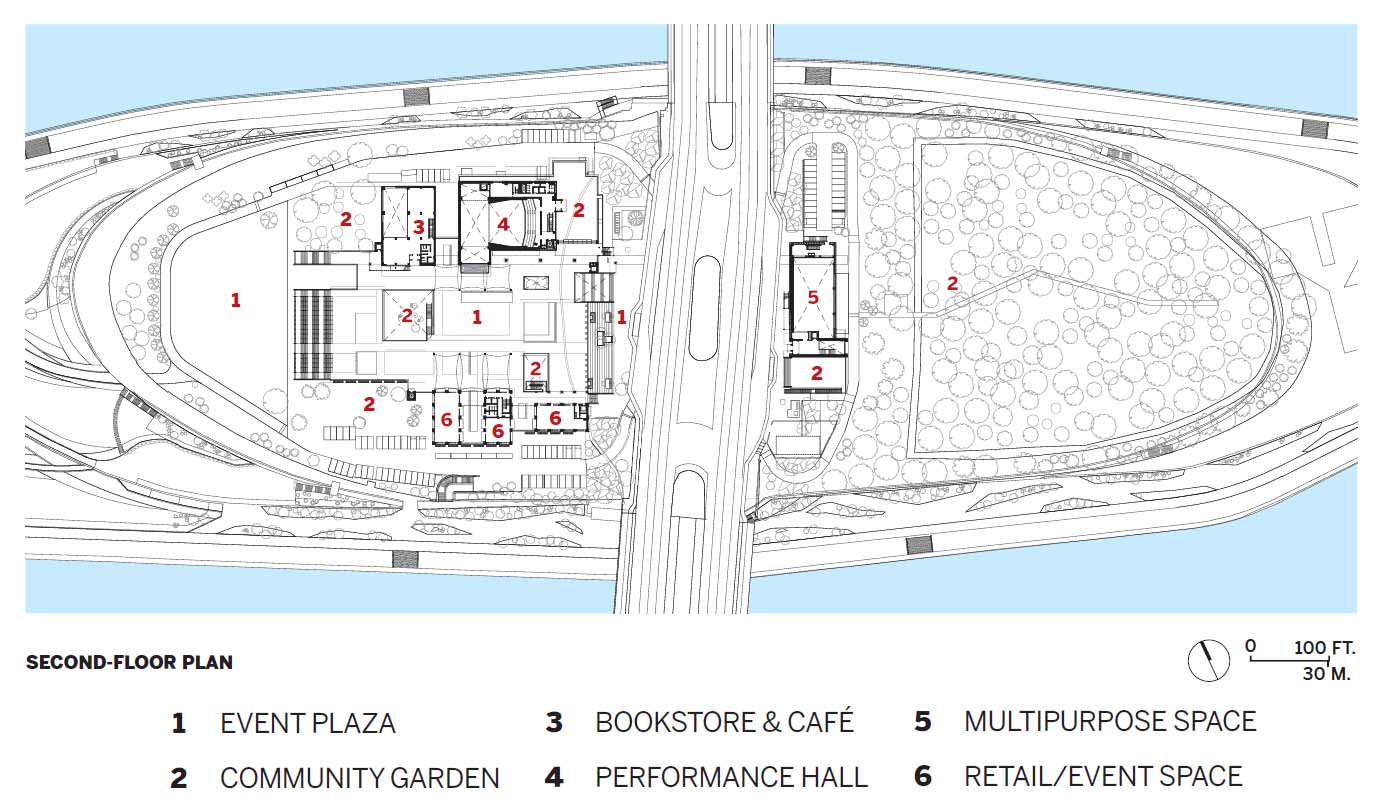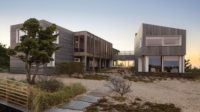Whether man-made or reclaimed from nature, islands near cities hold a certain appeal for urban areas looking to add green public space amid increasing density: New York’s Governors Island, for example, or Northerly Island Park in Chicago. In Seoul, one of the most population-dense cities in the world, the opportunity to create a satellite park for the capital came in the form of land that, until the 1970s, had been attached to the mainland and engineered to serve as a beach. Originally part of the Han River’s northern bank, the beach became partly submerged in the 1970s—as the river expanded and the construction of protective dikes led to changing currents—to become 30-acre Nodeul Island.
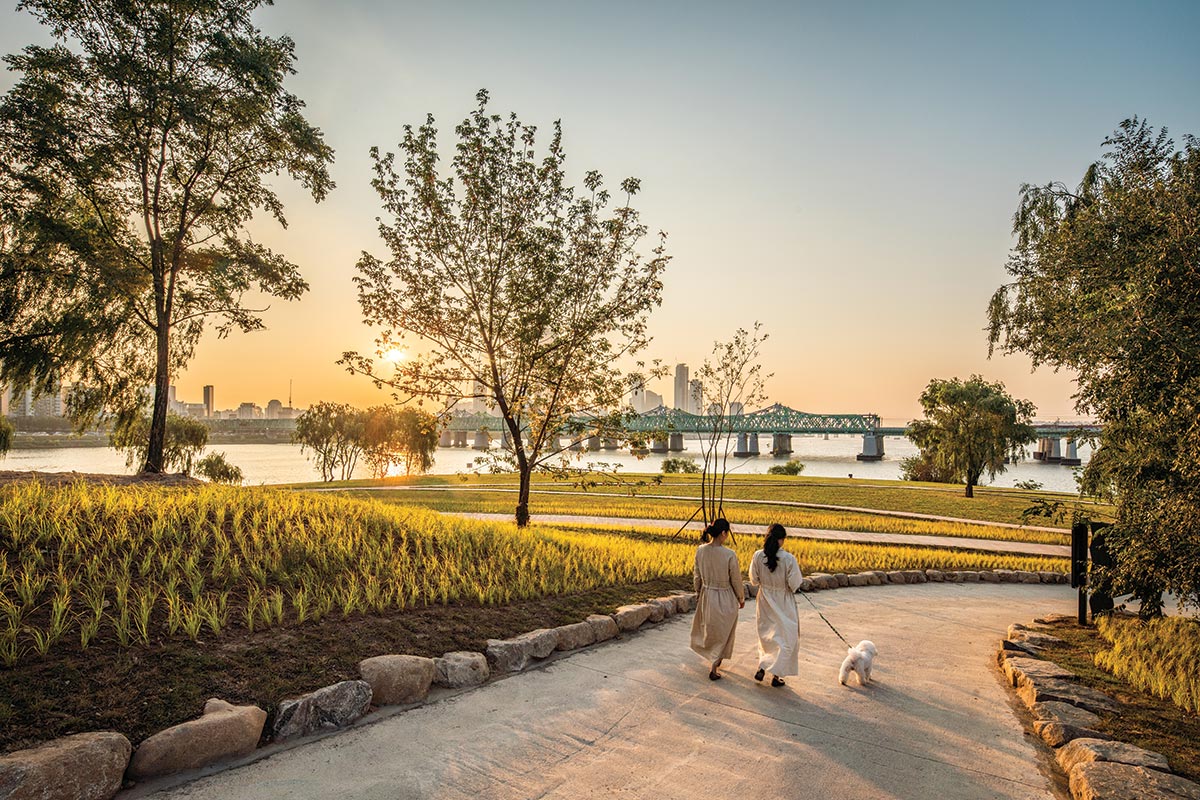
Pathways flanked by gardens provide ample opportunities for strolling. Photo © Cheong-O Yu, click to enlarge
Since this shift, the island has been the subject of several ambitious development plans, including some for resorts or performing arts centers, and even a Morphosis-designed opera house. Ultimately, none were deemed financially feasible, and, after acquiring the island in 2005, the Seoul city government focused on developing a design that made good economic sense while preserving aspects of the area’s natural ecology, and accommodating a flexible range of programming aligned with the community’s desires. After several years’ soliciting citizen input, the city launched an international design competition with the goal of creating a music-centered cultural complex, with theaters, parks, markets, and a café. Upon winning the competition in 2016, Pilsoo Maing, Donghwan Moon, and Jihoon Kim (who were classmates at Harvard’s GSD and had kept in touch while working at firms in New York) founded their New York– and Seoul-based architecture firm, MMK+.
Learn how to Activate and Modernize Underutilized Park Space.
Sponsored by Landscape Forms
“Responding to Seoul’s vision and hope for the island, the Nodeul project focuses on developing a place of public value,” says Moon, “not glamorous or enormous structures, as in previous proposals.” The team’s strategy included raising the ground plane close to the level of the multilane bridge that traverses the island’s center from north to south. (Though the existing bridge already had pedestrian lanes in both directions, they did not provide easy access to the island and were primarily used for crossing the Han.) Now most visitors arrive by bus, and walking access over the bridge has been improved by stairs onto landscaped plazas that extend toward the west and east sides of the island to connect with pedestrian circulation. The project’s built area comprises about 100,000 square feet: the upper level—with the arrival plazas, as well as amphitheater-style seating and viewing decks—and a lower level, accessible by several staircases and ramps, which holds creative and cultural venues, including offices, shops, galleries, a bookstore, a multipurpose hall, and a 450-person performance space.
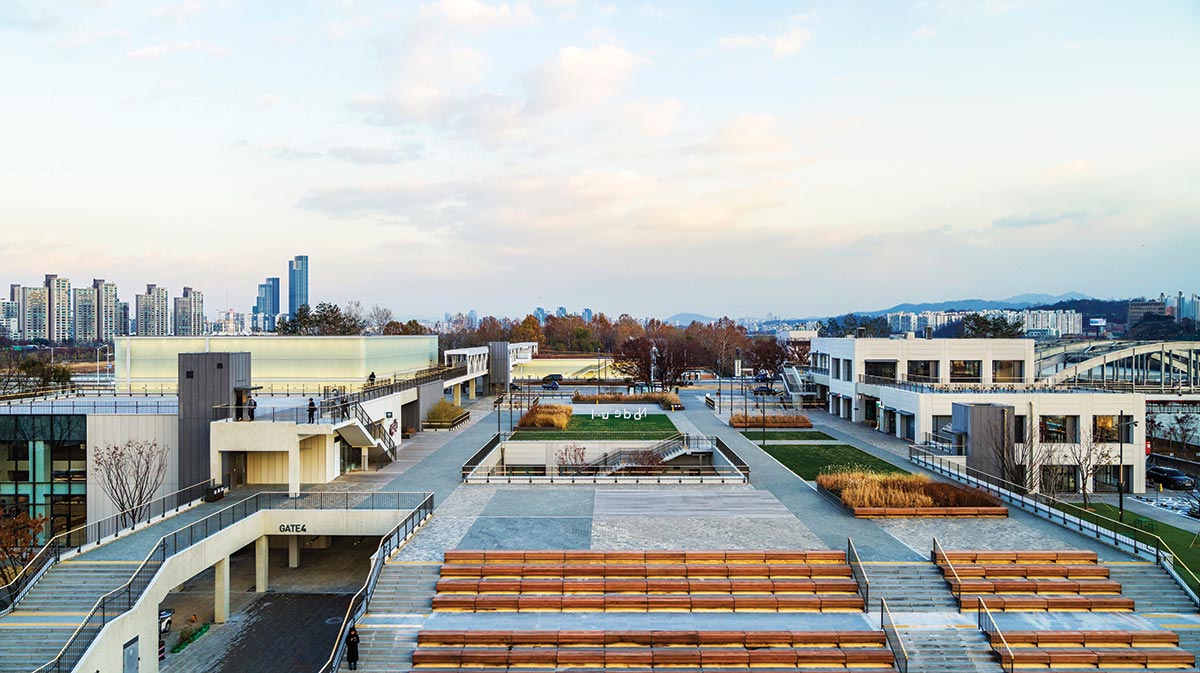
The top level of the new built area includes viewing decks and seating. Below are cultural venues, offices, cafés, and retail. Photo © Hyun Jun Lee
On the building’s east side, MMK designed viewing platforms facing a protected forest area, which is being restored by the government after decades of neglect. To the west, the architects collaborated with Dongsimwon Landscape Architects to create a continuous landscape with a gentle slope, extending the lower-level circulation onto a promenade that wraps the entire island. Along this pathway, the team sliced away existing paving and inserted planting beds for low-maintenance species, including cogongrass and Korean willow; this enabled the team to avoid the cost of creating an entire new groundscape. Their scheme also allows the landscape to withstand occasional flooding, especially during heavy summer rains, while the island’s new buildings and upper level are designed to 100-year-flood protection standards.
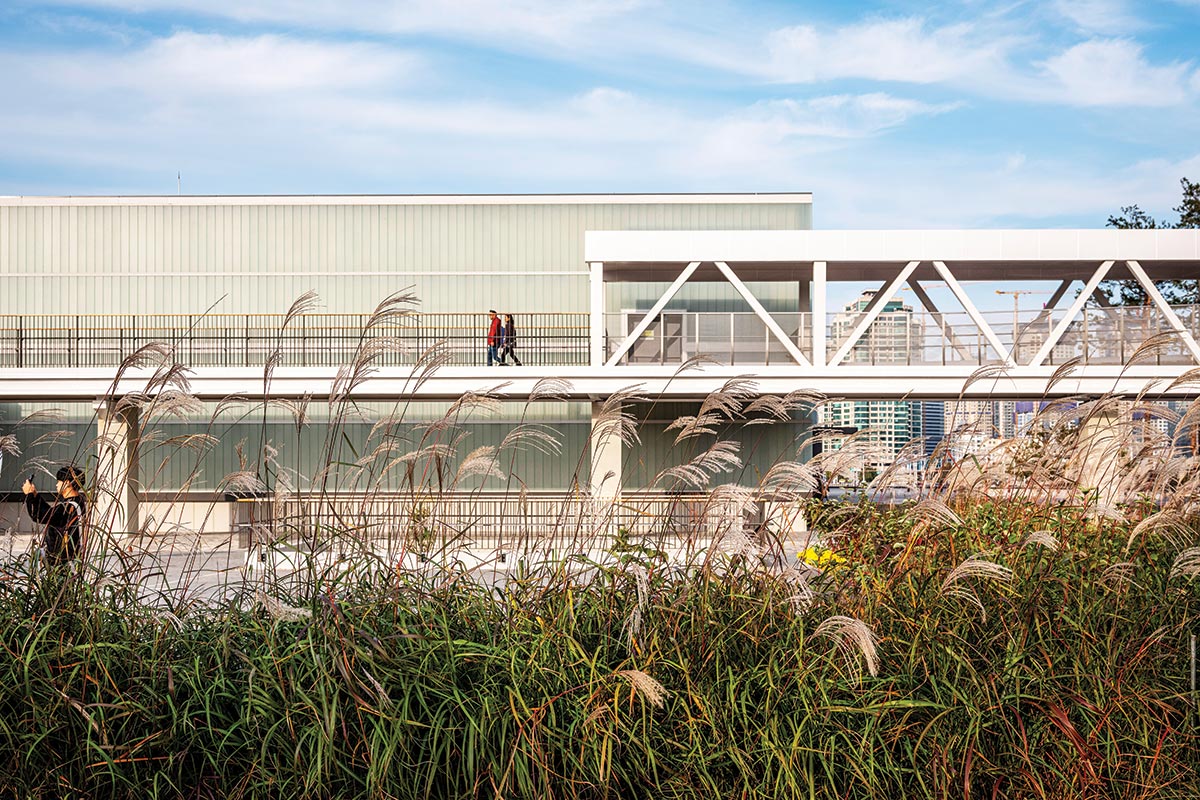
The top level of the new built area includes viewing decks and seating. Below are cultural venues, offices, cafés, and retail. Photo © Hyun Jun Lee
Though some of Nodeul’s cultural programming has been curtailed by the pandemic, it is a reconnection to nature that has brought more and more visitors here. “My friends who live nearby love to go out there and walk,” says Moon. “That’s the thing happening these days: even though there aren’t large gatherings, people come to stroll and look at the beautiful sunset.” With the city now exploring ways to increase access, perhaps with a dedicated pedestrian bridge, the island will, no doubt, continue to gain popularity as a gateway to—and respite from—Seoul’s bustling precincts for decades to come.
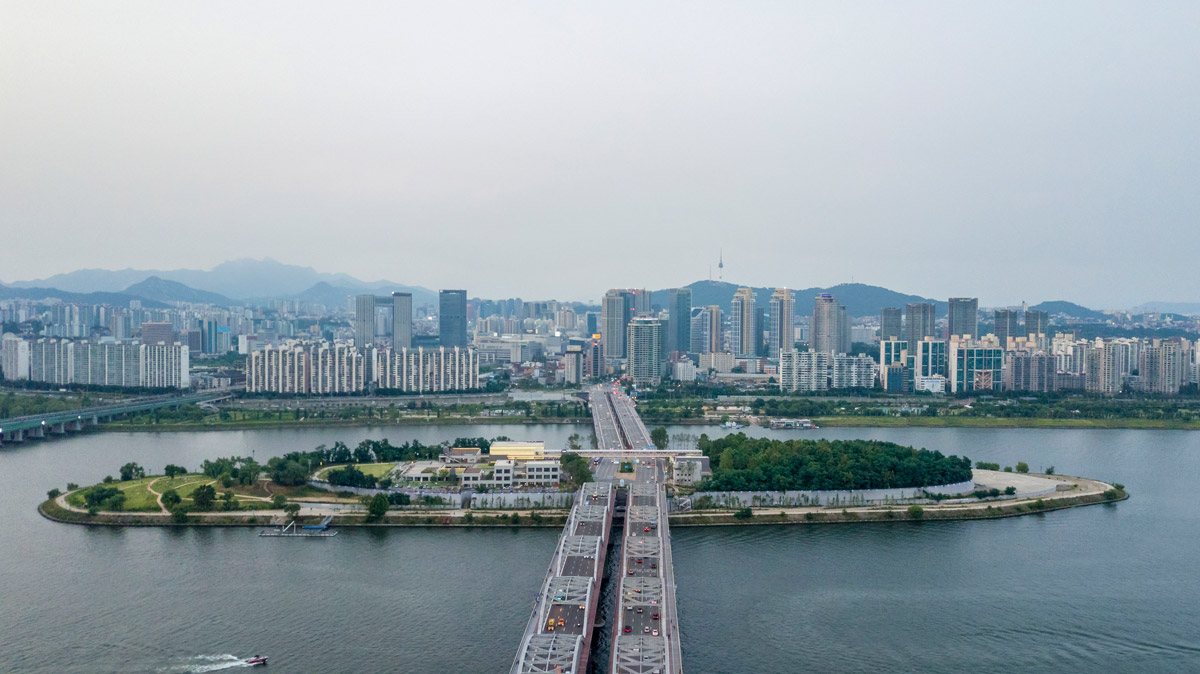
Photo © Hyun Jun Lee
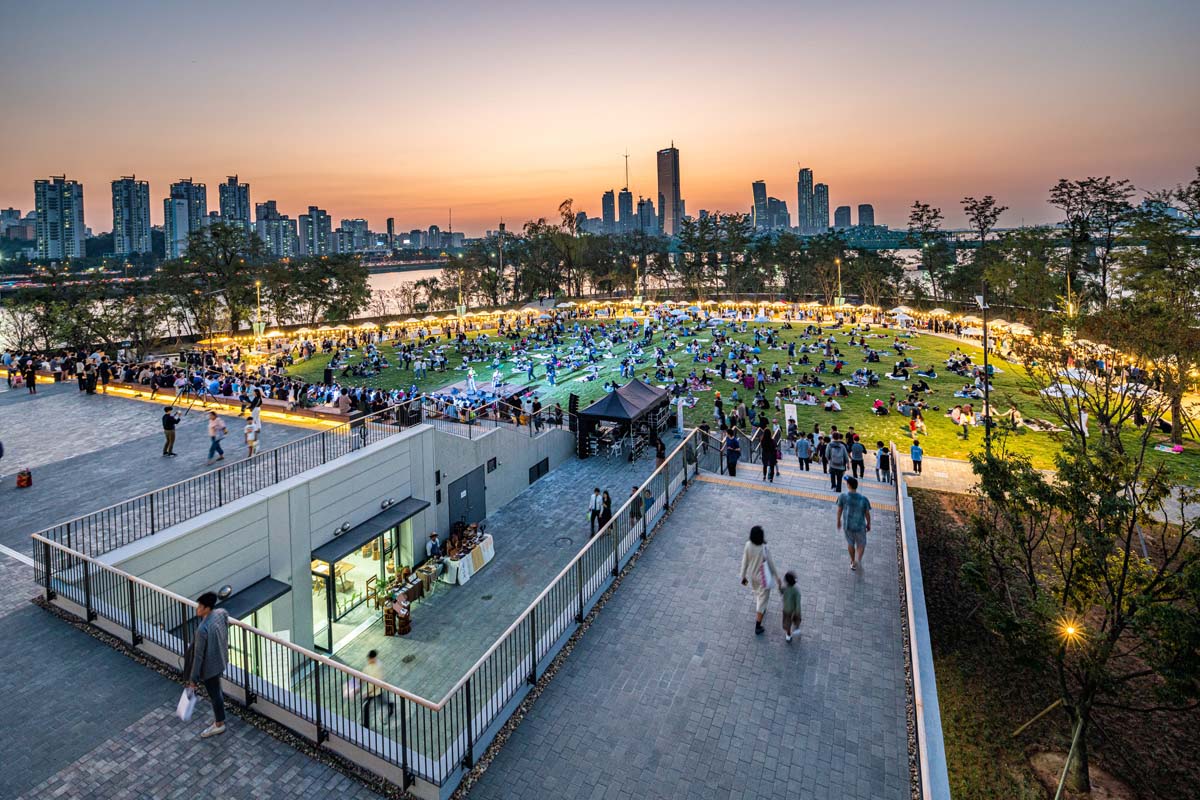
Photo © Cheong-O Yu
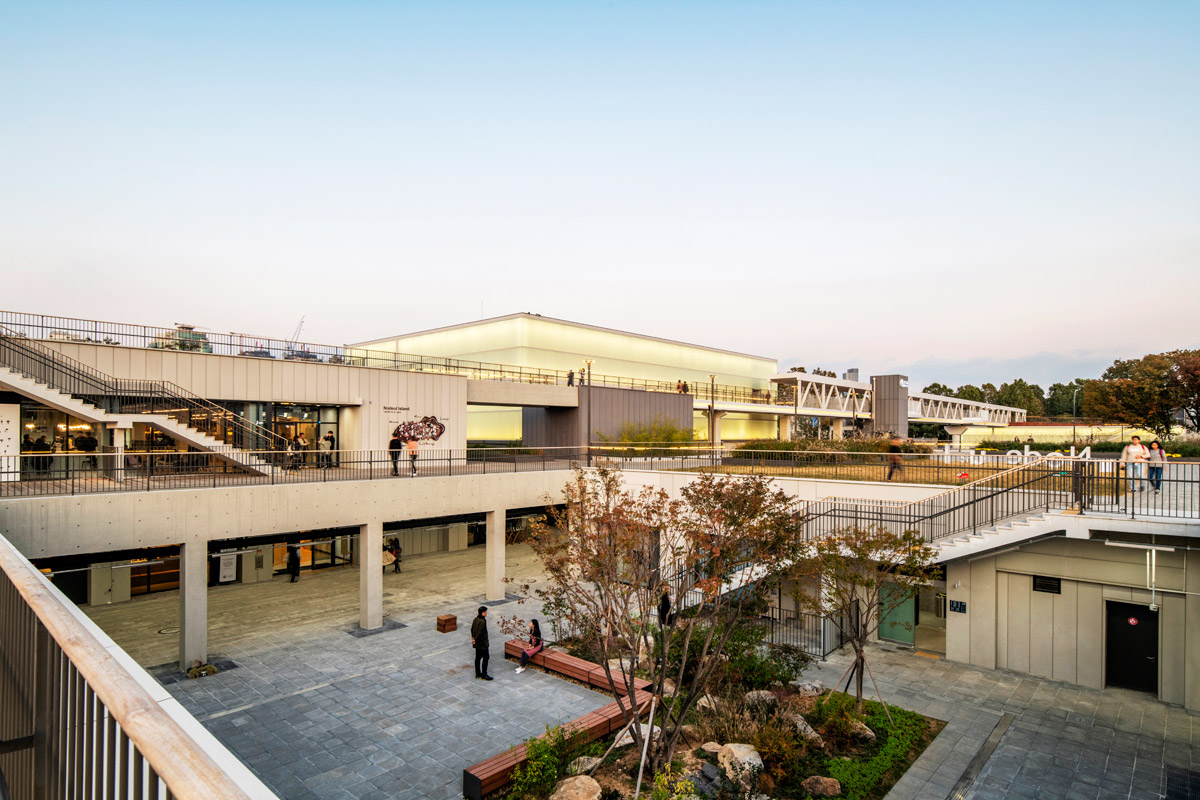
Photo © Hyun Jun Lee
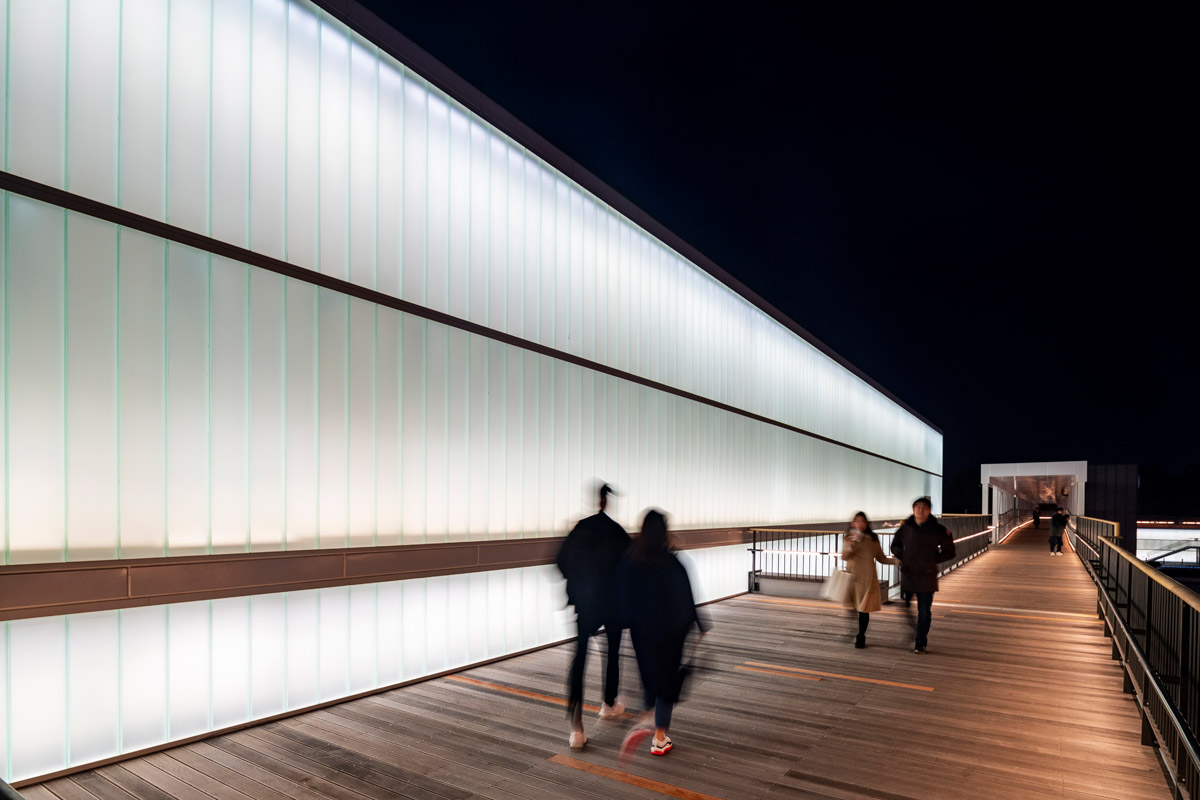
Photo © Hyun Jun Lee
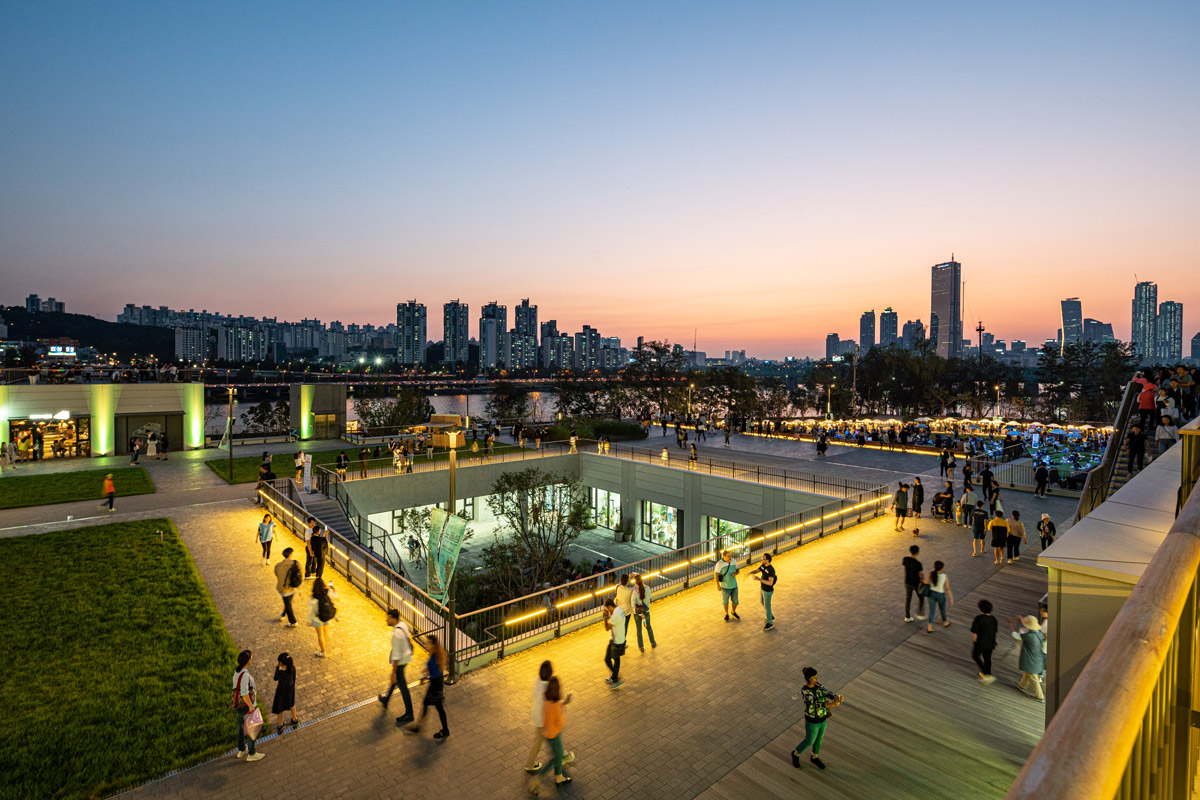
Photo © Cheong-O Yu
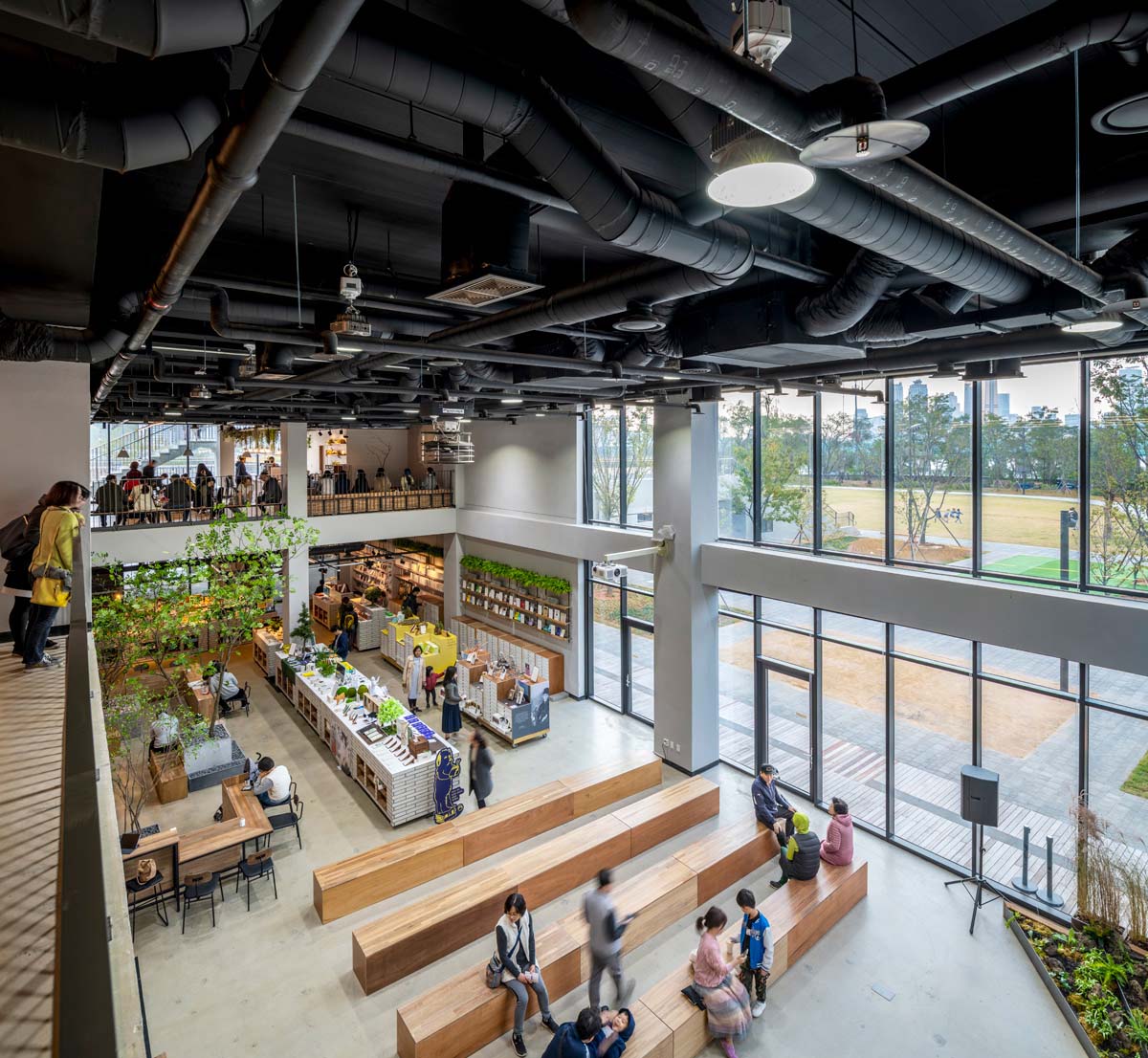
Photo © Hyun Jun Lee
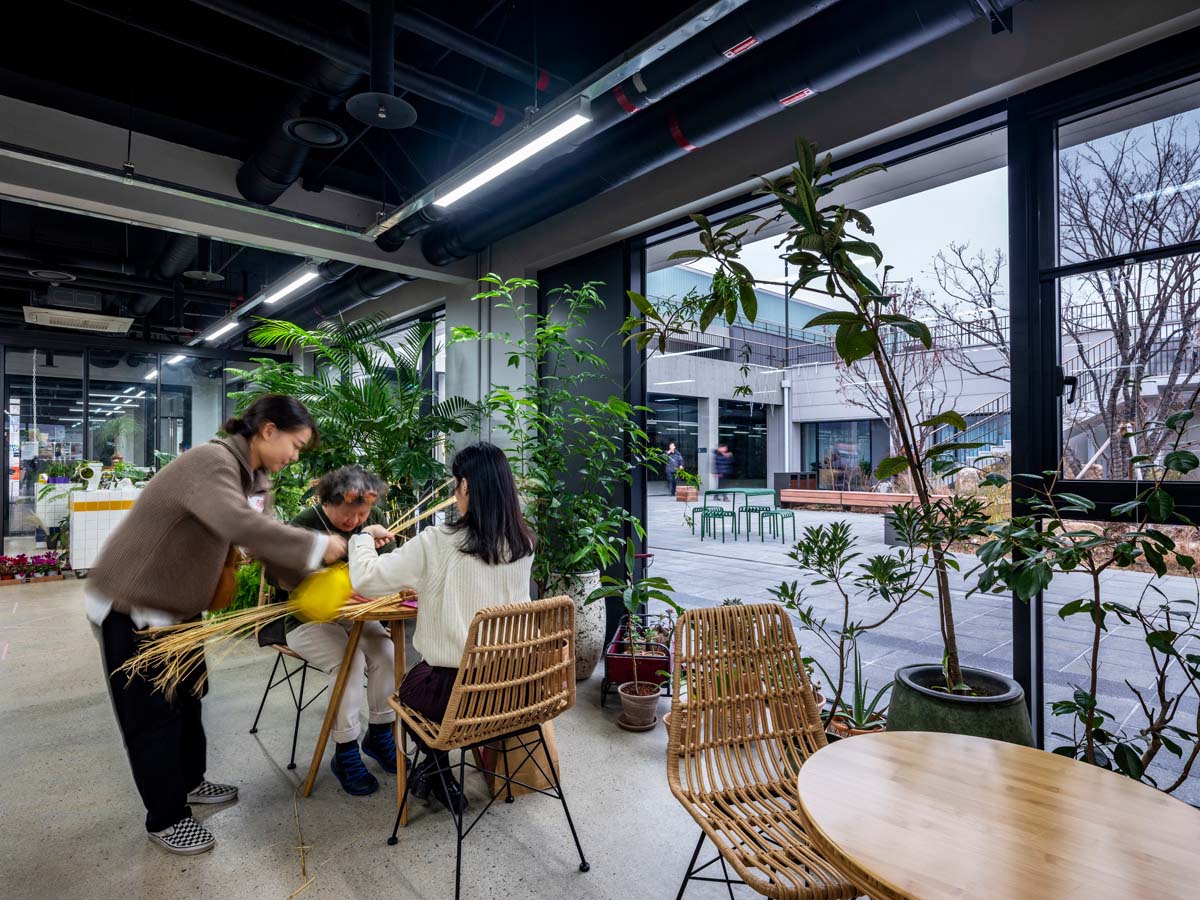
Photo © Hyun Jun Lee
Click plan to enlarge
